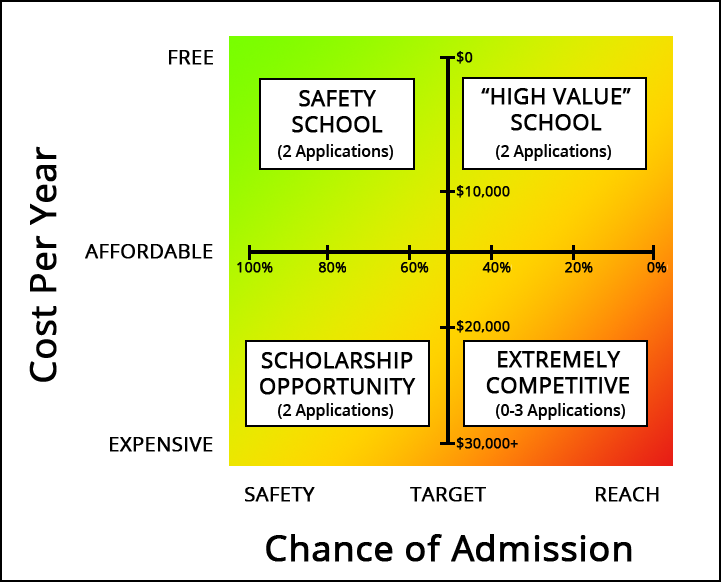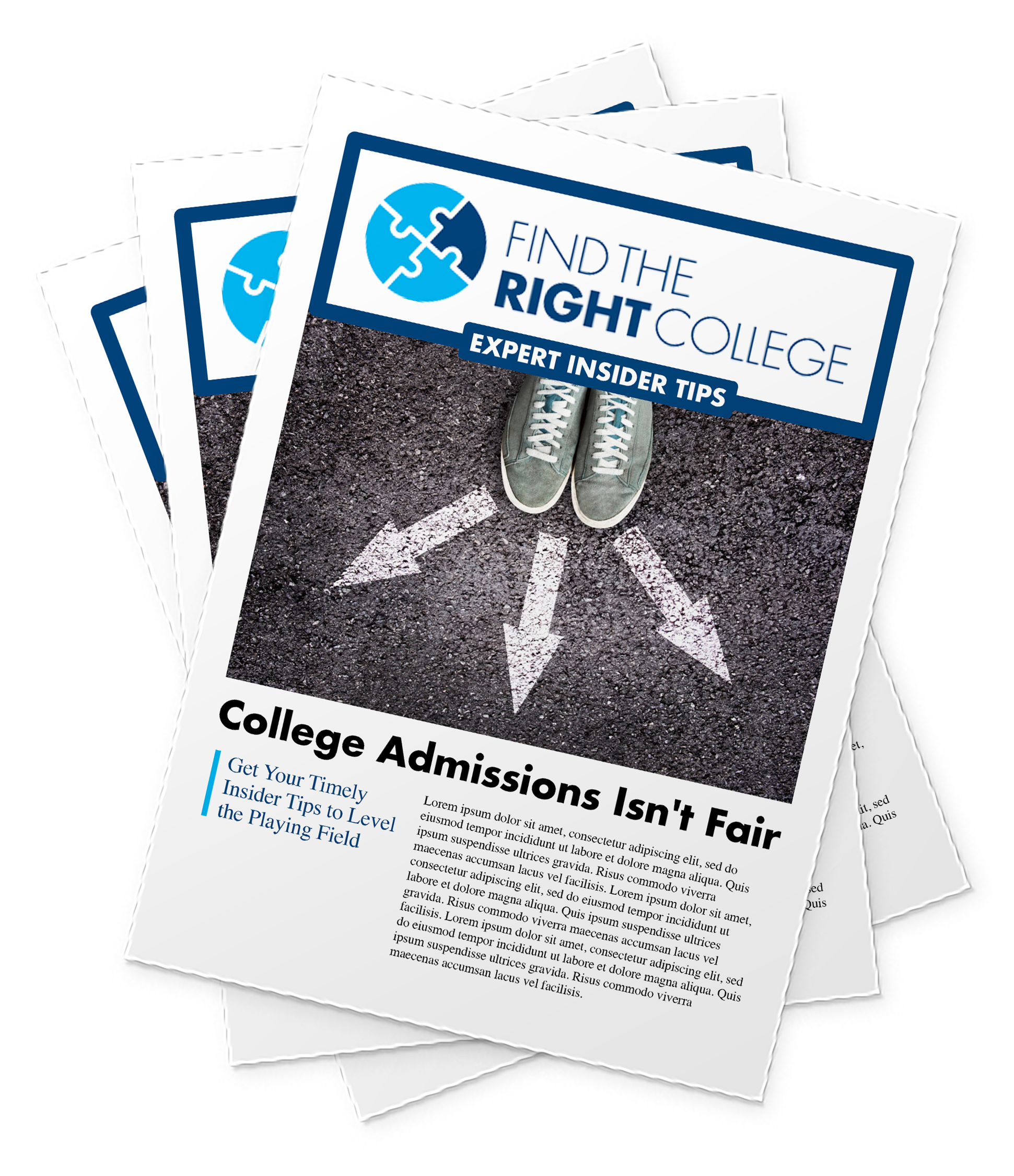It is easy to get caught up in “college application hysteria” where it feels like you need to apply to 15 colleges. The truth is that you don’t need to submit that many applications. To stay calm and prevent things from spiraling out of control, we find it helpful to examine your list of schools through a slightly different prism – one where you weigh your chance of getting in along with the cost of the school. In this blog post, we suggest that every college application falls in between one of four different scenarios shown in the diagram and described in further detail in the text below.

Recall that your mission is to receive 3+ Affordable Admit Decisions and to limit your total number of applications to a reasonable amount (let’s say 5-7 total) so use this framework to make sure you have exciting options this spring without getting burned out from completing too many applications. Let’s examine each quadrant in more detail.
Quadrant I. Safety School
Description: You can definitely afford it and you can definitely get in.
Suggested Number of Applications: 2
You need to cover your bases in terms of being admitted to at least one college that you can afford tuition costs. If there is a school that checks off these two boxes and that you feel is generally a good fit for you (a state or local school, for example), you may only need one college to secure a certain path to college. If there isn’t one school that easily checks those boxes, you may need multiple options in this category.
If it makes sense, we advise students to identify a school that accepts Early Action applications. If your Early Action application is successful, a school that you might normally classify as a Target or Reach turns into a de facto Safety School and you can add another Target or Reach school to your list.
Quadrant II: “High Value” School
Description: You can definitely afford it, but it’s a reach.
Suggested Number of Applications: 2
These schools provide the most “bang for the buck” and frequently appear on lists that rank the “Best Value Colleges”. They tend to be highly competitive but offer generous financial aid packages to those who are accepted, and especially to those who are accepted and demonstrate a need for financial aid. Amherst College may be the poster child for this type of school. (Princeton too.) And state schools like University of Virginia and University of North Carolina – Chapel Hill also tend to be featured on such lists.
Schools that fall into this category will vary from student to student because their willingness to offer financial aid often hinges on a family’s income. Top Colleges Are Cheaper Than You Think (Unless You’re Rich). So wealthy students may have fewer options in this category compared to students from more modest backgrounds.
Quadrant III. Scholarship Opportunity
Description: You might not be able to afford it, but you can definitely get in.
Number of Applications: 2
You might look at this list and ask, “Why would someone apply to an expensive safety school?” Well, if earning scholarship money is a top priority, this type of school can be a good match for you! You place yourself in the running for scholarship money from colleges by applying to schools where you have a stronger academic profile than the average applicant – starting with GPA and test score data is a simple way to begin researching colleges where this might apply to you. This process takes some research and also means you may need to cast a wide net, because no scholarship is guaranteed.
Quadrant IV. Extremely Competitive
Description: You might not be able to afford it, but you can possibly get in.
Number of Applications: 0-3
For many students who aspire to attend highly selective colleges, the cost of tuition is not a primary factor. Furthermore, applying to several of these types of colleges makes sense because the odds of admission are so low. If you want to stretch for several dream schools (regardless of cost), that’s great! Usually, these applications involve extra writing and larger application fees, so be sure to cover your bases and do your scholarship schools early (maybe even first) so that you don’t run out of energy applying to the Ivy League.
Alternatively, if you only have one dream school and want to focus on that one, choosing one (especially via a binding Early Decision plan) can be a wise, strategic choice, too. You can spend more time proving fit and interest to that school if you are only focusing on one.
Nicole has dedicated the entirety of her 20 year career to encouraging higher education opportunities. After graduating from Vanderbilt, she worked in her alma mater’s admissions office. The, she completed her PhD in Counseling so she could bring that expertise into college counseling. Nicole partnered with her former Vanderbilt colleague, Fitz Totten, to form Find The Right College and support their mission to make trustworthy advising more accessible.



